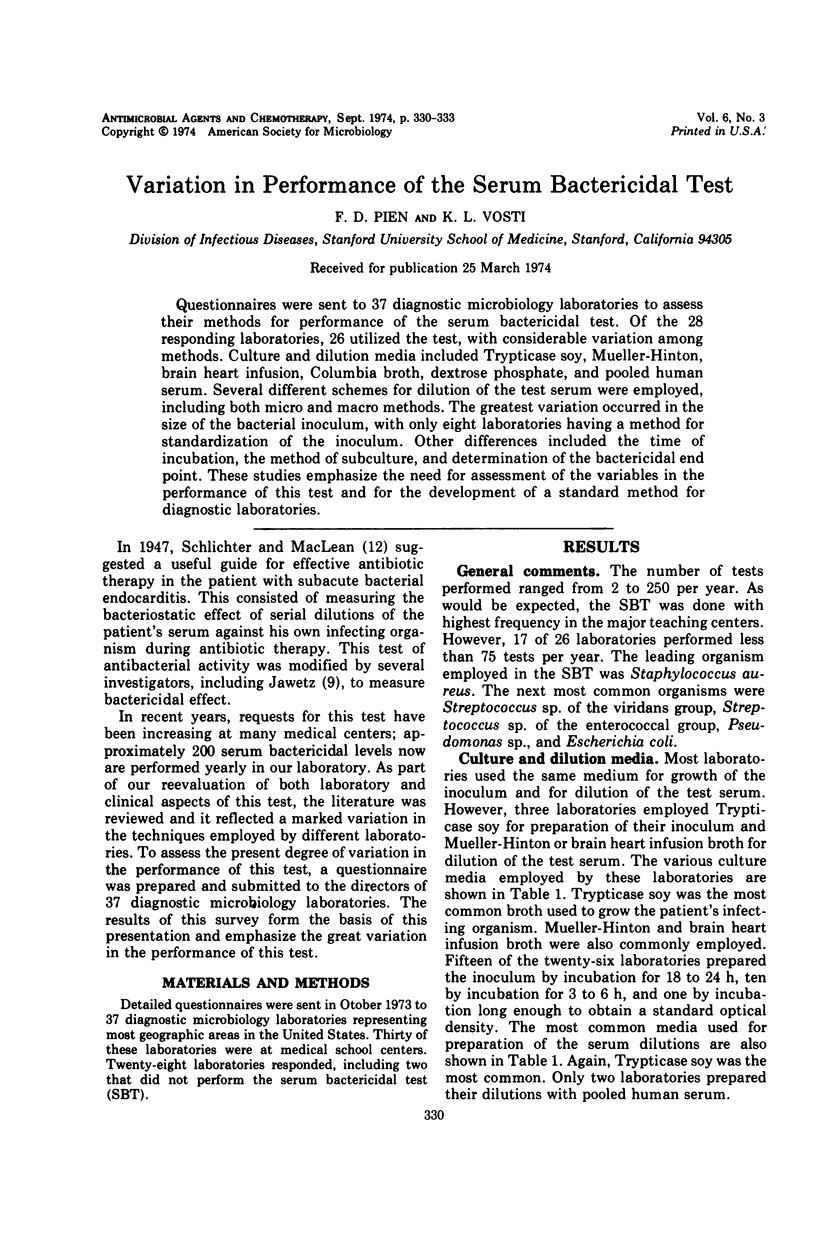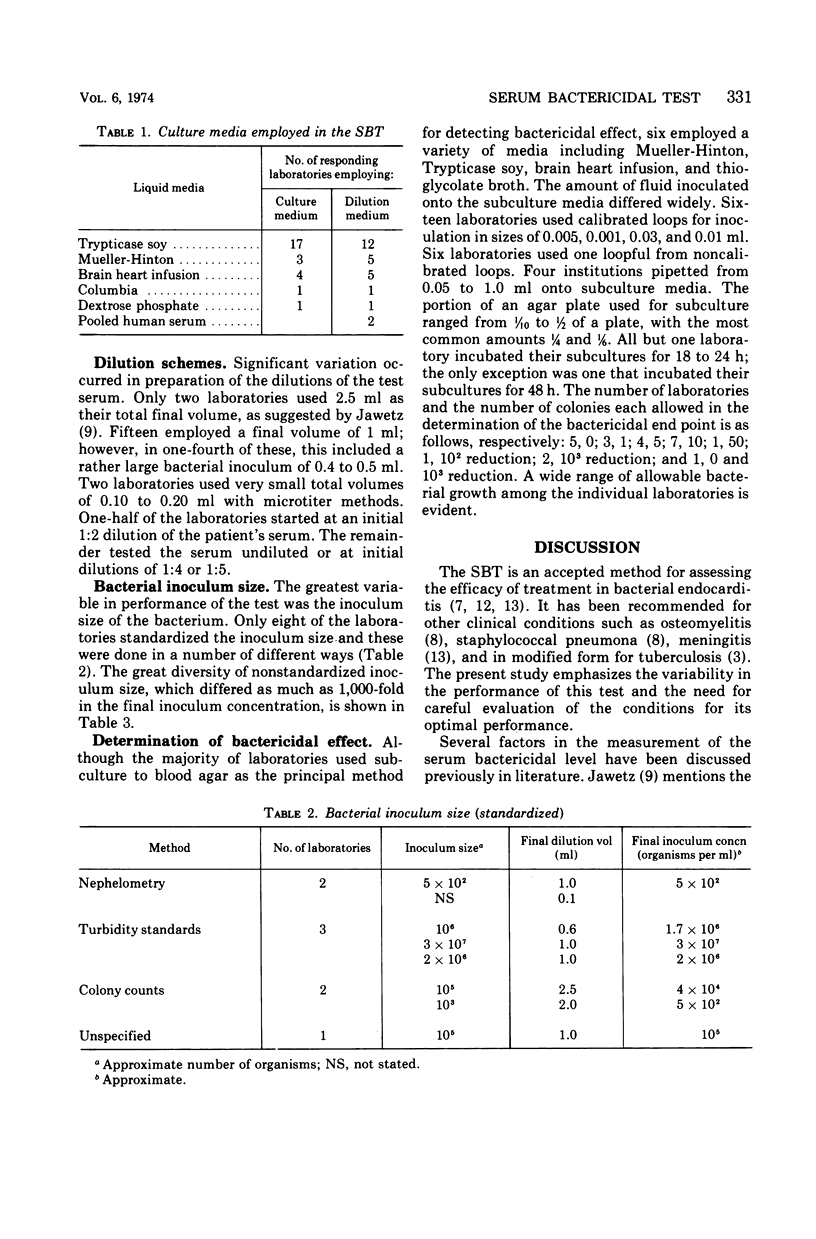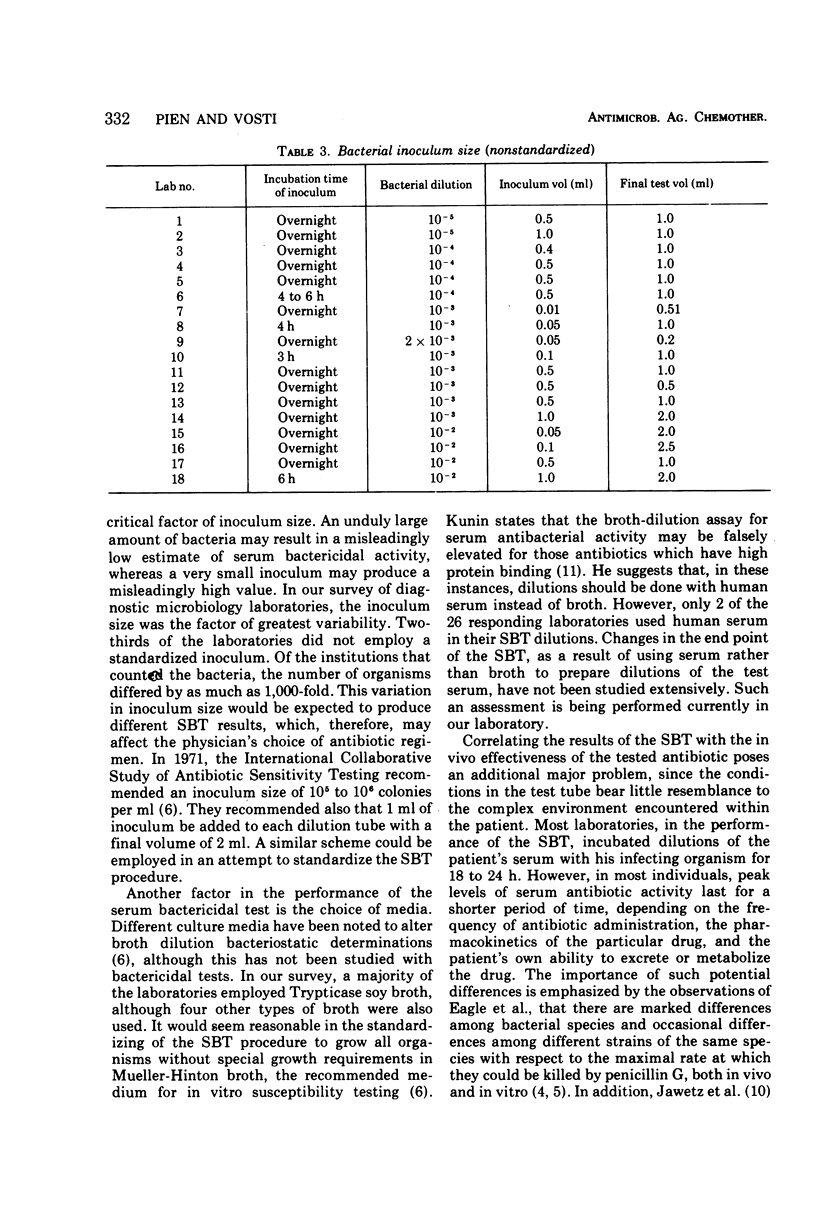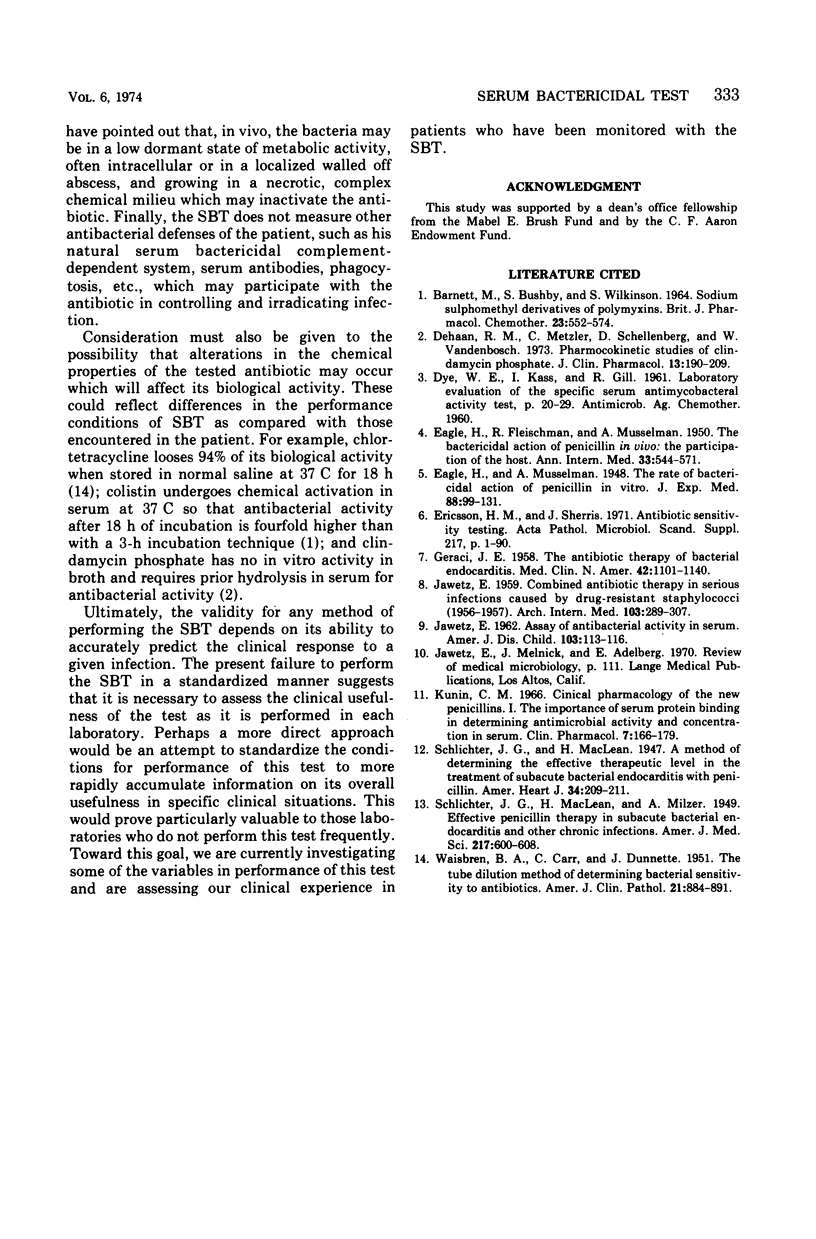Abstract
Questionnaires were sent to 37 diagnostic microbiology laboratories to assess their methods for performance of the serum bactericidal test. Of the 28 responding laboratories, 26 utilized the test, with considerable variation among methods. Culture and dilution media included Trypticase soy, Mueller-Hinton, brain heart infusion, Columbia broth, dextrose phosphate, and pooled human serum. Several different schemes for dilution of the test serum were employed, including both micro and macro methods. The greatest variation occurred in the size of the bacterial inoculum, with only eight laboratories having a method for standardization of the inoculum. Other differences included the time of incubation, the method of subculture, and determination of the bactericidal end point. These studies emphasize the need for assessment of the variables in the performance of this test and for the development of a standard method for diagnostic laboratories.
Full text
PDF



Selected References
These references are in PubMed. This may not be the complete list of references from this article.
- BARNETT M., BUSHBY S. R., WILKINSON S. SODIUM SULPHOMETHYL DERIVATIVES OF POLYMYXINS. Br J Pharmacol Chemother. 1964 Dec;23:552–574. doi: 10.1111/j.1476-5381.1964.tb01610.x. [DOI] [PMC free article] [PubMed] [Google Scholar]
- DeHaan R. M., Metzler C. M., Schellenberg D., Vandenbosch W. D. Pharmacokinetic studies of clindamycin phosphate. J Clin Pharmacol. 1973 May-Jun;13(5):190–209. doi: 10.1002/j.1552-4604.1973.tb00208.x. [DOI] [PubMed] [Google Scholar]
- EAGLE H., FLEISCHMAN R., MUSSELMAN A. D. The bactericidal action of penicillin in vivo: the participation of the host, and the slow recovery of the surviving organisms. Ann Intern Med. 1950 Sep;33(3):544–571. doi: 10.7326/0003-4819-33-3-544. [DOI] [PubMed] [Google Scholar]
- Ericsson H. M., Sherris J. C. Antibiotic sensitivity testing. Report of an international collaborative study. Acta Pathol Microbiol Scand B Microbiol Immunol. 1971;217(Suppl):1+–1+. [PubMed] [Google Scholar]
- GERACI J. E. The antibiotic therapy of bacterial endocarditis: therapeutic data on 172 patients seen from 1951 through 1957: additional observations on short-term therapy (two weeks) for penicillin-sensitivie streptococcal endocarditis. Med Clin North Am. 1958 Jul;42(4):1101–1140. doi: 10.1016/s0025-7125(16)34262-6. [DOI] [PubMed] [Google Scholar]
- JAWETZ E. Combined antibiotic therapy in serious infections caused by drug-resistant staphylococci (1956-1957). AMA Arch Intern Med. 1959 Feb;103(2):289–307. doi: 10.1001/archinte.1959.00270020117014. [DOI] [PubMed] [Google Scholar]
- Kunin C. M. Clinical pharmacology of the new penicillins. 1. The importance of serum protein binding in determining antimicrobial activity and concentration in serum. Clin Pharmacol Ther. 1966 Mar-Apr;7(2):166–179. doi: 10.1002/cpt196672166. [DOI] [PubMed] [Google Scholar]
- WAISBREN B. A., CARR C., DUNNETTE J. The tube dilution method of determining bacterial sensitivity to antibiotics. Am J Clin Pathol. 1951 Sep;21(9):884–891. doi: 10.1093/ajcp/21.9_ts.884. [DOI] [PubMed] [Google Scholar]


